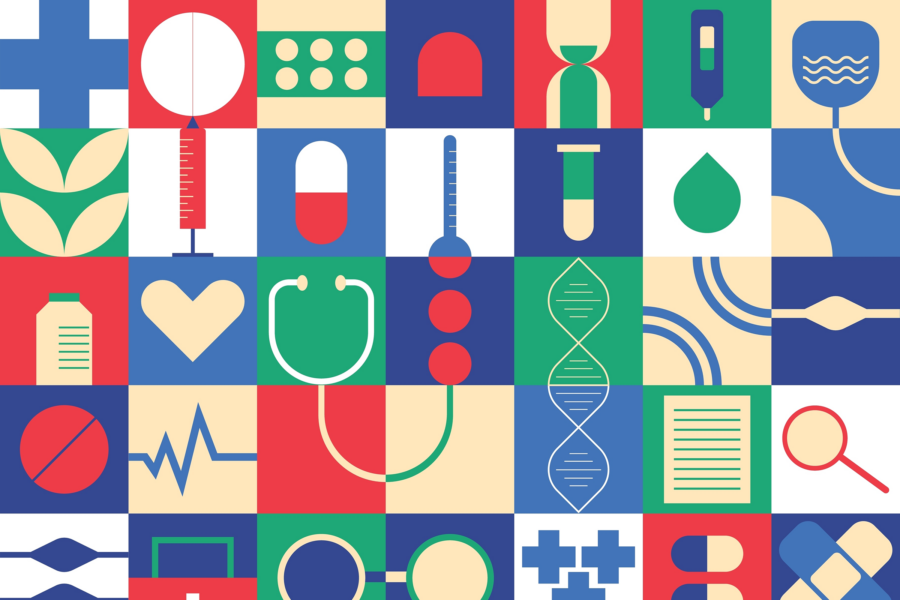This is Part 1 of our ongoing series diving into the healthcare market. You can read Part 2, which focuses on the healthcare workforce shortage, here.
In 2021, I received my blood work after a routine physical. I remember my shock at the results: high cholesterol, off-the-chart BMI, and officially pre-diabetic. I knew I had to address my lifestyle habits.
I started to change my diet and exercise regularly, but I wasn’t getting better. When I went to my doctor, I routinely heard “you just need to lose weight,” which was not very helpful. Once I finally had enough, I went to a holistic health doctor who worked closely with a nutrition coach. We did a battery of diagnostics and tests I have never done (including a hormone panel, which is critical for women and not required as part of a typical annual physical). And for the first time in my life, I was given a health plan that was personalized and addressed the root cause of many of my problems. I addressed a hormone imbalance, improved my sleep, ate foods that were actually good for my specific dietary needs, among many other changes.
Three years later, my a1c and cholesterol levels are within normal range, and I have never felt better.
While I’m grateful for how my health journey has evolved, the reality is that, for most people, health care often ends up in a vicious cycle of repeated, costly visits to doctors and hospitals, sometimes with dubious results. Or worse: not even having the networks and other viable options to turn to.
At Reach, we are thrilled to dive deeper into health care and build upon our exciting portfolio, which includes Stepful, Coral Care, Cartwheel, and Sketchy. For me, this is personal. While many of us have the privilege of time, education and resources to navigate a very complicated system, the vast majority do not. We need to build a system that can work for everyone.
In Part I of this healthcare series, we are excited to share the nine macro trends that are transforming healthcare. Part II will cover the landscape of solutions that are helping to address the healthcare workforce crisis.
The 9 Trends Transforming Health Care
Health care is one of the largest industries globally. In the U.S. alone, health expenditures totaled $4.5 trillion, or 17% of GDP in 2022, and is expected to grow to almost 20% of GDP by 2030. Yet, despite spending more than any other advanced economy, Americans see worse outcomes across life expectancy, obesity, infant mortality, and diabetes.

We believe the healthcare market is at a pivotal moment, where the pain points are stronger than ever but the opportunity for transformation is equally immense, driven by groundbreaking technological advances in AI and clinical breakthroughs. The most impactful solutions often emerge during times of adversity, and with rising healthcare costs, poor health outcomes, and an estimated shortage of 3.2 million healthcare workers by 2026, this is the time to build towards a more equitable and effective healthcare system.
Health care is uniquely positioned to see outsized ROI from the current technological shift in artificial intelligence. Fundamentally, AI is very effective at taking unstructured data and making meaning from it. Healthcare data now accounts for 30% of the world’s data (think of all the apps, devices, wearables in your pocket, homes and at the doctor’s office), yet 97% of it goes unused. That is a wealth of critical information that can help clinicians be more effective in providing more personalized care, highlight key patient risks and diagnoses that often go missed, and help automate administrative work that drives up healthcare costs. It’s no surprise that health care is one of the leading industries experimenting with and adopting AI.

Rising costs, labor shortages, and accelerating AI adoption are just some of the nine trends that are reshaping the healthcare landscape, presenting challenges as well as opportunities for impact. Here’s what we are tracking closely:
- Increasing healthcare costs driven by aging population, chronic conditions, prescription drugs, and services costs.
- Labor shortages throughout the healthcare continuum, with challenges across new supply and retention.
- Changes in financing from fee-for-service to value-based care models that can lower costs and improve quality.
- Care location shifting from in-facility to at-home, given rise in virtual care, skyrocketing costs, and technological advancements.
- Consolidation of health systems due to M&A resulting in EHR consolidation, higher prices, and reduced access to care.
- Consumer expectations are shifting as patients demand trust, convenience, and personalization at affordable prices.
- Accelerating pace of clinical innovation is promising, but also makes it challenging for clinicians to stay up to speed on the latest knowledge.
- Explosion in data from the adoption of digital clinical medical records, mandated data exchanges, and use of smartphones and wearables.
- Adoption of AI in healthcare is accelerating, starting primarily with administrative use cases but there are opportunities for going deeper into the clinical workflow.
To go deeper into the supporting data behind each of these trends, check out our healthcare deck above.
We are eager to invest in solutions that take advantage of these massive shifts in health care and, most importantly, improve the quality and accessibility of our healthcare system. If you are building solutions that help clinicians perform at the top of their license, provide patients more personalized and effective healthcare, enable providers to transition to preventative and collaborative care, and otherwise help make health care more affordable, please reach out to jomayra@reachcapital.com or directly submit your company’s info here!
In Part 2 of this series, we look at the healthcare workforce shortage and specific areas in this space we will be investing in.
A special thank you to Pallavi Hukerikar, our Reach summer intern, who helped on this analysis.



